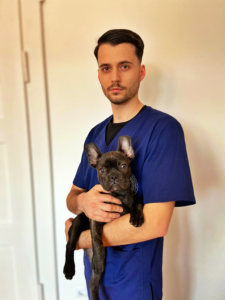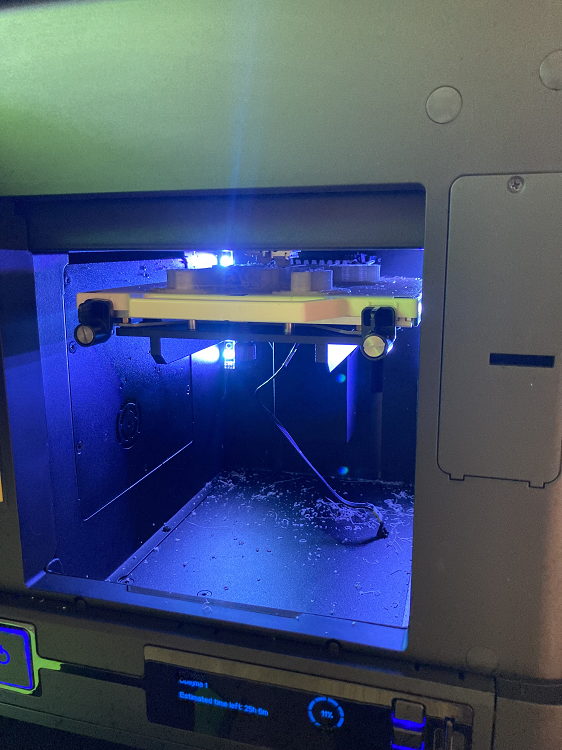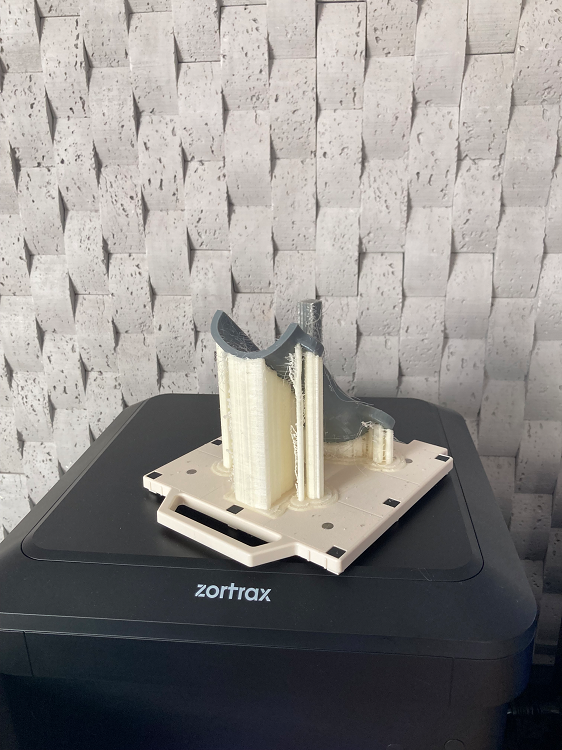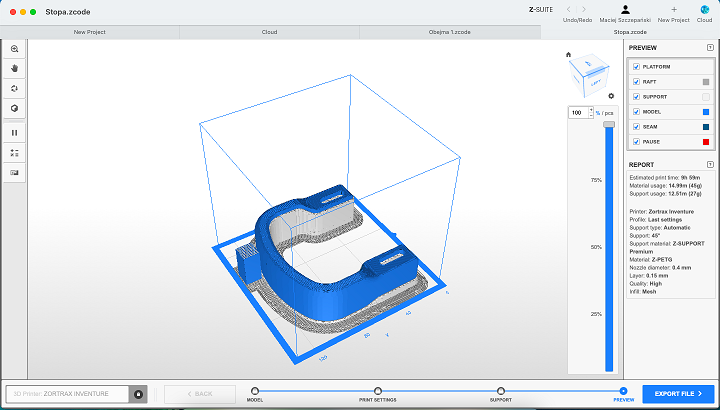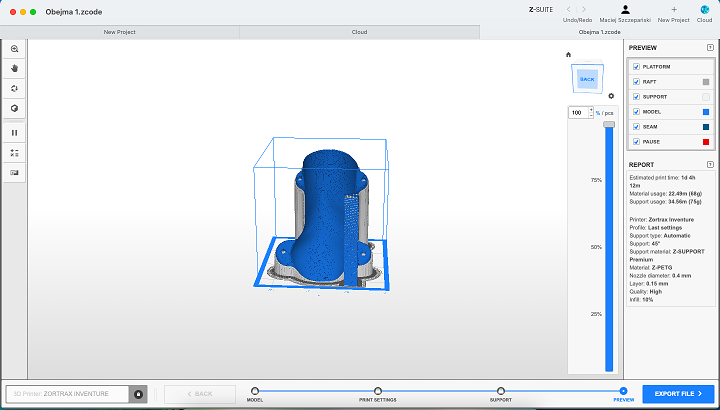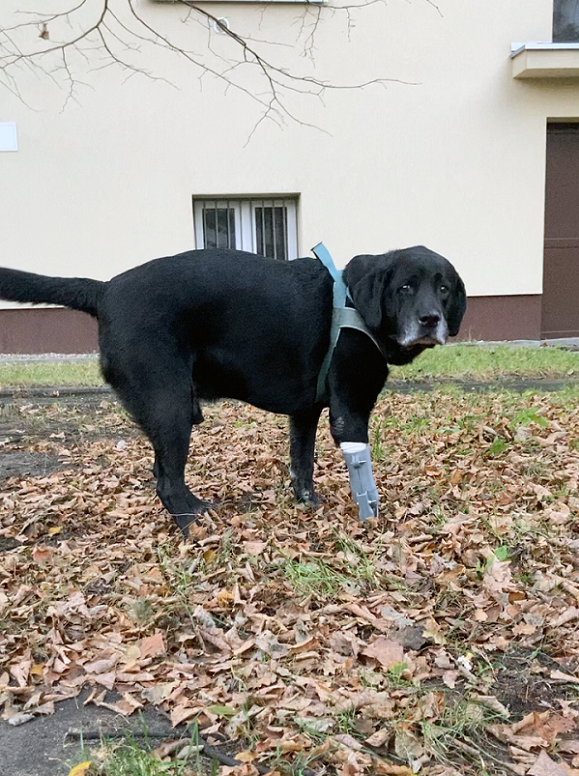There’s no shortage of stories in which 3D printing is used to help animals—and that’s a good thing! From wild birds and tortoises to working animals and household pets like cats and dogs, it seems as though the rate at which additive manufacturing is being adopted for animal care is steadily increasing. The latest case comes from a fifth-year veterinary medicine student at Wrocław University of Environmental and Life Sciences in Poland.
In his final year at university and with a passion for animal orthopedics, Maciej Szczepański is using the Zortrax Inventure 3D printer to create custom prostheses for disabled animals. While participating in orthopedic surgeries and learning about various methods of helping maimed animals, he discovered that animal prosthetics are much more common in the US than in his home country, and wanted to do something about it. As the student learned, 3D printing seemed to offer greater flexibility and lower production costs compared to traditional techniques.
“When I realized that creating prostheses for animals is still a niche in Poland, I decided that I would focus on veterinary prosthetics,” Szczepański said in a Zortrax press release. “Gathering materials on the subject of animal prostheses was not an easy task and it took me a long time due to the small amount of information available on the subject. When I finally succeeded, I set myself a goal to create a minimum of two prostheses for two different cases.”
Szczepański outsourced the next steps of his project at first, but that changed once he received the compact Inventure printer from Polish 3D printing solutions provider Zortrax, and he decided to print the prostheses and test out various solutions on his own.
“The multitude of 3D printing applications proves how dynamically this industry is developing. In our work, we see various projects using our 3D printers that make a real impact. We always try to support those initiatives and innovative ideas which solve serious problems,” said Natalia Jusiak, Head of Marketing at Zortrax. “When we learned the story of Mr. Szczepański, whose goal is to help maimed animals, we decided to support his project. We are happy to be a part of it and we are proud that our printer has brought tangible benefits to the creative process.”
In order to create prostheses tailored to a specific animal, Szczepański gets to know his pet patients first, and the first two were dogs Sonia, who was hit by a car and lost part of her back paw, and Leto, whose front paw was damaged by a train. First, he takes measurements, including the length and circumference of the missing limb, and then uses alginate to make an impression of the stump. The imprint is filled with a special ceramic plaster to create a cast, and then Szczepański takes a 3D scan of the cast, in order to create a digital 3D model.
“All I have to do later is 3D print the prototype on my Zortrax Inventure, which makes my work significantly easier, as I can print on the spot and check if my assumptions are correct,” Szczepański explained in a Zortrax blog post, mentioning that the lack of print outsourcing also saves time and money and makes the work much more efficient.
Having his own 3D printer allows him to test different levels of infill density in order to evaluate the durability of the printed prototypes, before he completes the final prosthesis, which is almost entirely printed on the desktop Inventure and includes a socket to hold the dog’s stump and a part that actually comes in contact with the ground while the dog is walking.
“For the socket, I choose the solid infill option, whereas the “foot” has slightly above normal infill density,” Szczepański said, noting that he also uses the Hybrid Support option during dual-extrusion printing. “I leave the rest of the settings assigned in Z-SUITE by default.”
The prostheses are printed using Z-SUPPORT Premium, Z-ULTRAT, and Z-PETG, which Szczepański says is “particularly useful” in this application because it has high resistance to wear and tear. Once 3D printing is complete, the model goes into the Zortrax DSS Station to dissolve the support structures, and then he screws the three components together, adding a layer of cloth inside the socket for comfort.
The Zortrax Inventure was Szczepański’s first experience with a 3D printer, and he said it was very easy to use in creating customized animal prostheses, kept costs down, and enabled a production time of three days from start to delivering the device to the animal. Speaking of the pet patients, the two dogs mentioned earlier are currently testing out their 3D printed prostheses, and Szczepański says that Leto got used to his very quickly, moving like a healthy dog while wearing it within just 15 minutes of the fitting.
Szczepański wants to expand his 3D printing activity, and is currently establishing a startup that he hopes will be able to offer continued support to animals with missing limbs and other orthopedic problems.
“In the future, I would like to use the 3D printer to create other prostheses or repair the ones I have already produced,” he concluded.
(Source/Images: Zortrax)
Subscribe to Our Email Newsletter
Stay up-to-date on all the latest news from the 3D printing industry and receive information and offers from third party vendors.
Print Services
Upload your 3D Models and get them printed quickly and efficiently.
You May Also Like
3D Printing News Briefs, January 15, 2026: Project Call, Sports Medicine, Aluminum Alloy, & More
In today’s 3D Printing News Briefs, America Makes announced the winners of a $1.1 million Project Call, Austal USA named a new Vice President for Business Development and External Affairs,...
US Army Awards Contract to Phillips Federal for Containerized WAAM Factories
Everything that the U.S. Army has been doing with additive manufacturing (AM) over the last year or so suggests that the branch is getting serious about deployable production systems. One...
Top 10 3DPrint.com Stories of 2025: Kickstarter, Consumer Goods, Bankruptcy, & More
As Vanesa Listek wrote, last year was a major turning point for additive manufacturing (AM), as the industry is working to sort itself out. Customers want proven use cases and...
3D Printing News Briefs, January 3, 2026: F-15 Replacement Part, Ice Trees, & More
Happy New Year! We’ve got an abbreviated 3D Printing News Briefs for you today, so we can all enjoy our holiday weekend but still keep up on the industry’s news....


